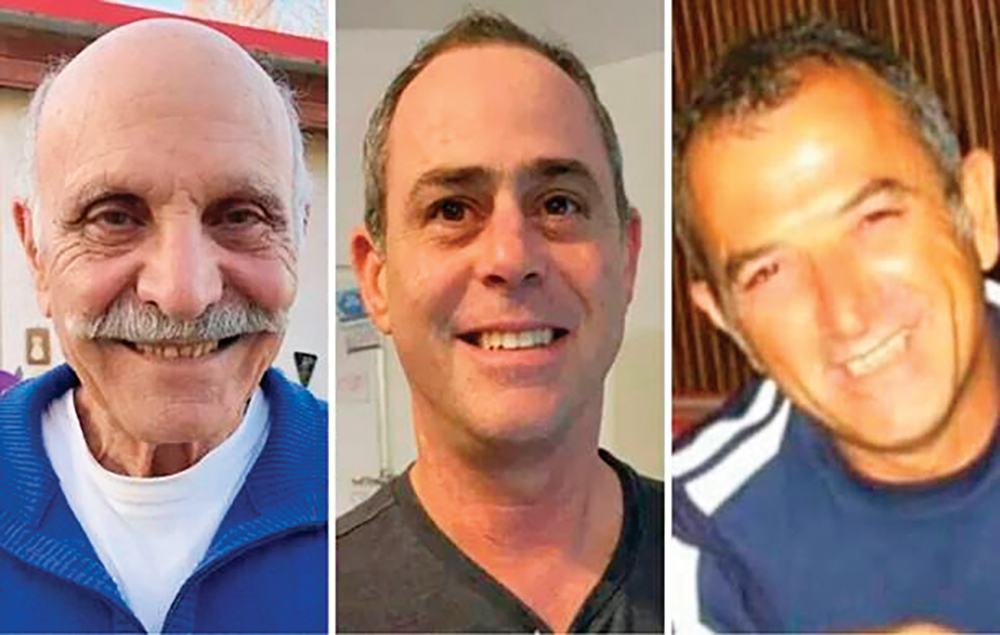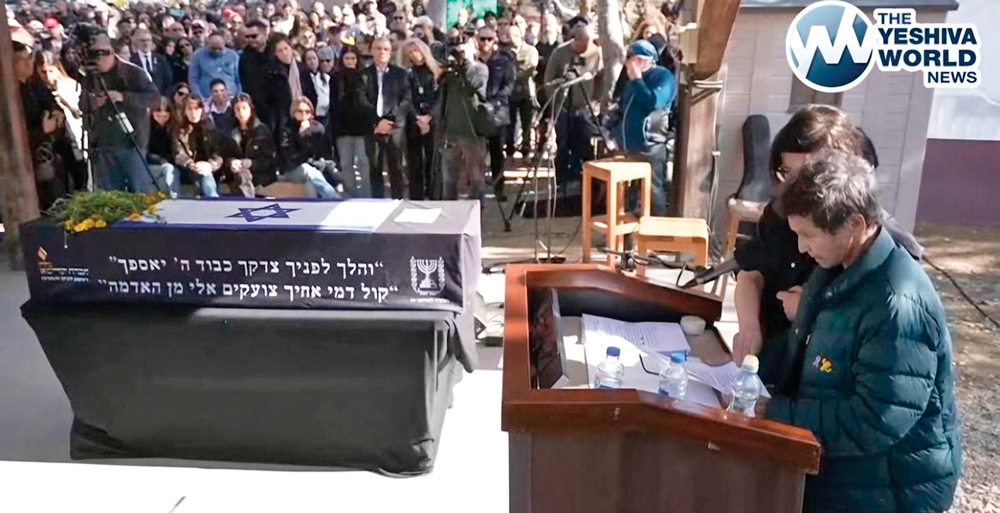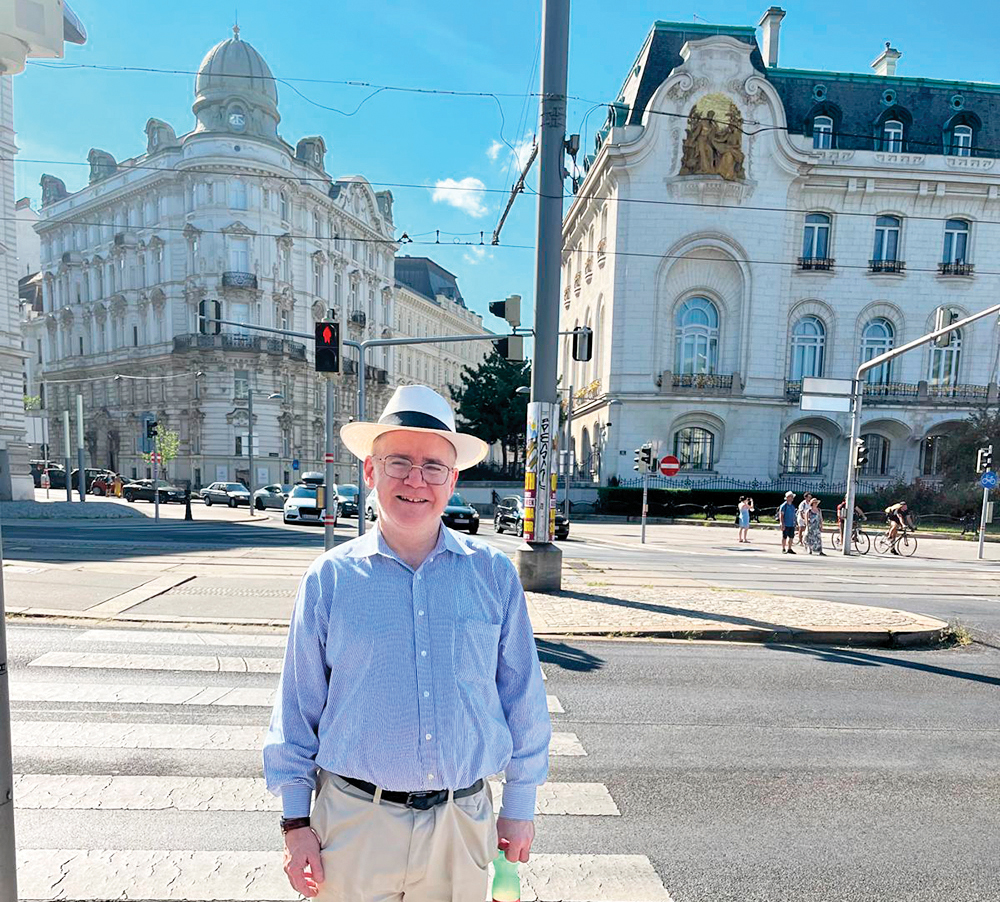
Kristallnacht is the euphemistic label of the November 9-10, 1938 pogrom during which hundreds of synagogues were burned to the ground, thousands of Jewish-owned businesses were looted and at least 91 Jews were killed across Nazi Germany. This government-sponsored attack resulted in 30,000 Jewish men being deported to concentration camps and opened the door to further organized attacks against Jews throughout Nazi-occupied Europe.
In marking the anniversary of this tragic day in recent Jewish history, on Wednesday morning, November 9, the Moriah School in Englewood hosted eighth graders from the Walter T. Bergen Middle School in Bloomingdale, New Jersey. Moriah eighth graders were seated alongside their visitors in the Moriah beit knesset for a program exploring the current spate of antisemitism in the United States and the specific details and ramifications of Kristallnacht.
The program was a result of a collaboration between longtime sixth-grade English instructor and eighth-grade history instructor Rachel Schwartz and Moriah parent Michelle Lowensteiner. In addition to her teaching responsibilities, Schwartz serves as the coordinator and director of the eighth-grade Holocaust Education Program, which involves the entire eighth-grade class. Lowensteiner, who has served as a child psychologist at the Walter T. Bergen Middle School for 20 years, is mother to three daughters, all graduates of the Moriah School and all former participants in Holocaust education classes. As the granddaughter of two Holocaust survivors, Lowensteiner was grateful for her daughters’ opportunity to be part of such a hands-on, meaningful program. This background motivated her to approach Moriah and the Walter T. Bergen School for a joint program.

With the participation of the Walter T. Bergen School Principal Jon Deeb, Schwartz and Lowensteiner initiated three planning meetings that were held over Zoom during the summer for the joint Kristallnacht program. On the morning of November 9, a bus carrying the Bergen eighth graders accompanied by Principal Deeb and several teachers arrived at the school and were ushered into the synagogue, which was decoratively set up with round tables and individual place cards for each student, seating each Moriah student alongside a Walter T. Bergen student.
After greetings by Head of School Rabbi Daniel Alter, the program was handed over to Schwartz, who began with an ice-breaking activity in which she asked the students to discover seven similarities between them. Then, in introducing the concept of antisemitism, the students were shown two short videos. Working in small groups, the students were instructed to answer questions listed on their Chromebook page dealing with antisemitism. These questions included: Is there antisemitism in today’s culture? How do we combat it? What is a stereotype? What are the effects of hateful images and speech? How can these lead to scapegoating? What are some examples of religious, political and racial antisemitism? Responses were then discussed with the entire group.
After a 15-minute break for socializing and partaking of “yummy” Kosher snacks, the students re-grouped to discuss the specifics of Kristallnacht. Based upon information from the Holocaust Encyclopedia, the students were asked to respond to specific questions. An example of a pivotal thought question posed to the students was “How can knowledge of the events in Germany and Europe before the Nazis came to power help citizens today respond to threats of genocide and mass atrocity in the world?” A collection of actual photos of the notorious pogrom were provided to which the students were asked to react. Questions posed included “What role does social media play today in our reactions as bystanders or upstanders?”
The third part of the program provided online testimonials by eight Holocaust survivors from which the students were asked to select one and recount an exceptional event from the suvivor’s life to share with the group.

Bringing together 120 middle schoolers representing many different religions and cultures who for the most part were not familiar with the lifestyles of the others was a feat in itself, according to the coordinators and teachers involved. Bringing a group of public schoolers to a Jewish day school where they were greeted with warmth and camaraderie was an even further accomplishment and hopefully with positive ramifications going forward.
Moriah Middle School Administrator Tzippoah Boim was enthusiastic about the program and sees the benefits of a future relationship between the two schools. She commented that there is a great deal that a Jewish day school can contribute to the better understanding and lessening of misconceptions held by youngsters today through the slanted information they are being fed on their social media.
After the program, Schwartz expressed her gratification at the positive climate that pervaded the event, on the part of both faculties as well as the students. She felt that the consensus of the group was that this should serve as the first of a series of ongoing programs between the two schools, focusing upon real-life issues confronting the youngsters. “Watching the students collaborate and bond gave each educator a feeling that this room truly promoted change and goodwill.”
By Pearl Markovitz












